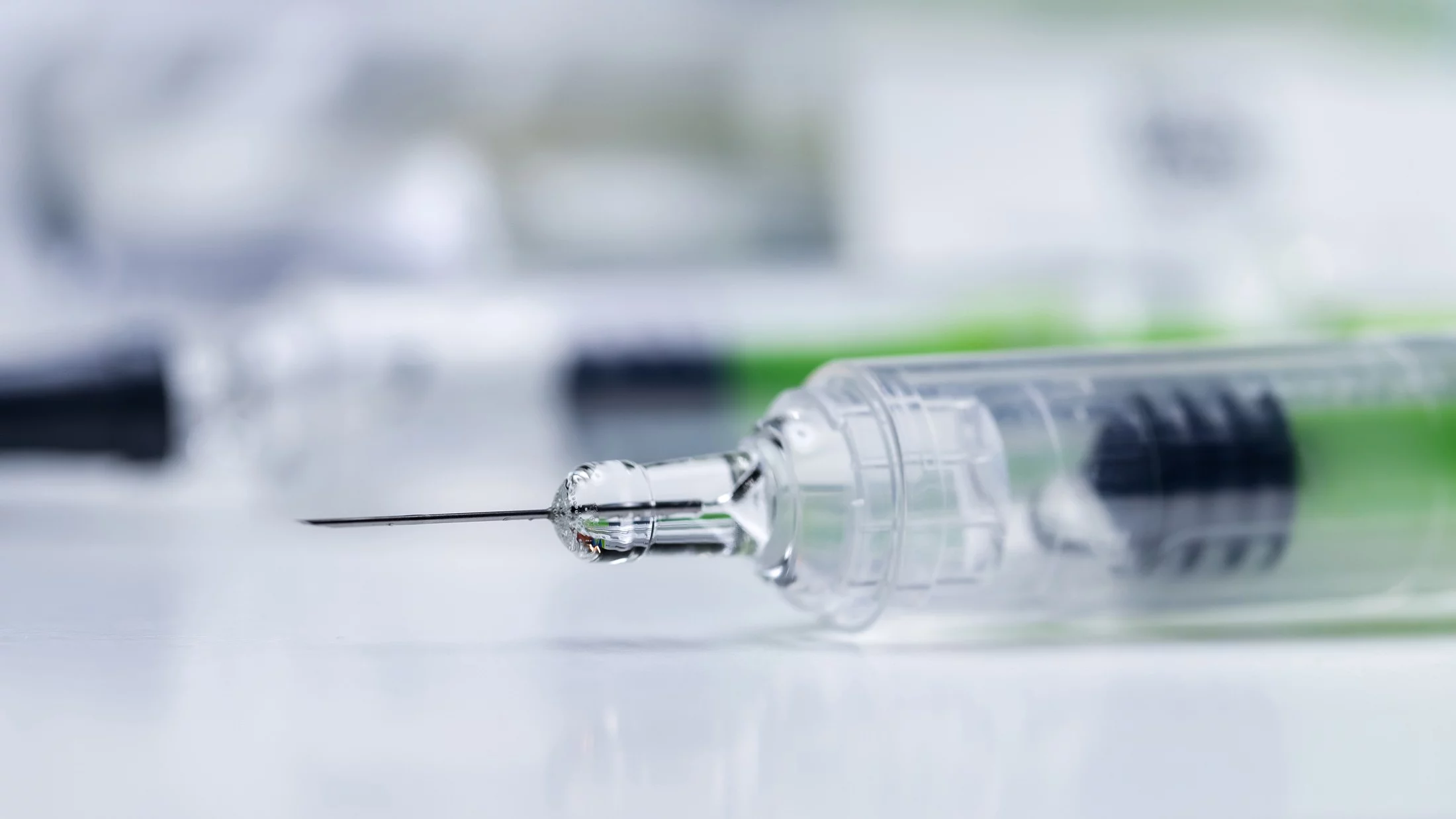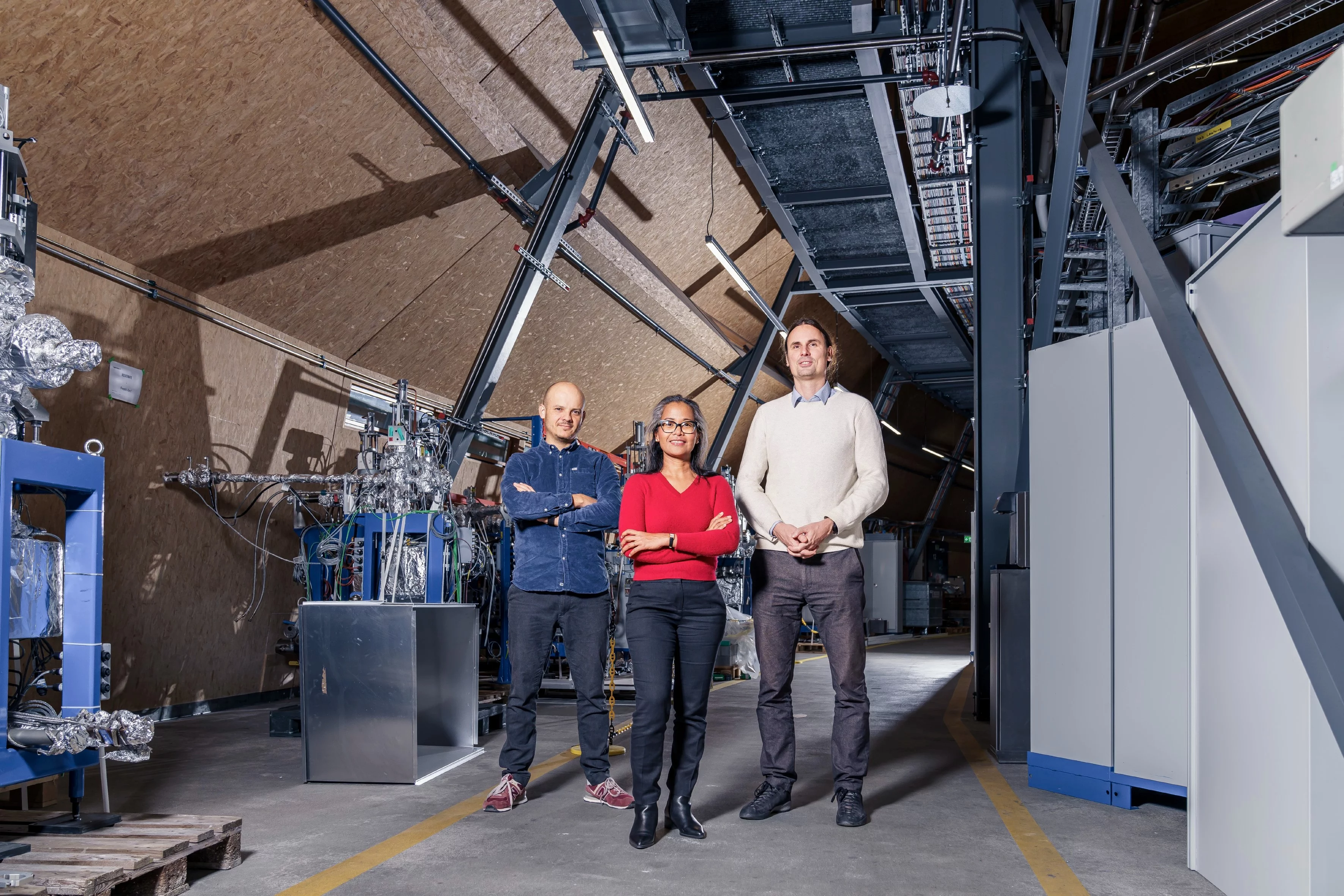Employees of the technology transfer centre ANAXAM and researchers from the Paul Scherrer Institute PSI used the unique analytical methods available at PSI to look inside pre-filled syringes. They found that, in rare cases, zinc from the needle shield can leach into the drug solution to be injected and possibly contribute to syringe clogging.
The task which the employees of the technology transfer centre ANAXAM set themselves, together with colleagues at the Paul Scherrer Institute PSI, can be likened to looking for a needle in a haystack. They were asked by the pharmaceutical company MSD (a trade name of Merck & Co., Inc., Rahway, N.J., USA) to find out whether tiny amounts of the element zinc can get inside the needles of pre-filled syringes and, if so, where it lodges in the needles.
The background is the observation that, in rare cases, the needles of pre-filled syringes (PFS) can become blocked, for example if the syringes are not stored in a cool enough environment. This phenomenon has been known for some time and has already been studied by ANAXAM. However, what has remained unclear is exactly what triggers the blockage. One suggestion was that zinc from the needle shield – the rubber cap into which the needle is inserted when the syringe is manufactured – could leach into the drug solution to be injected, making it more viscous, which would ultimately lead to blockages.
To investigate this theory, the team led by ANAXAM has now resorted to sophisticated methods of detection. These allowed them to look inside the blocked hypodermic needles and check whether and where zinc was present. The results have now been published in the journal Pharmaceutical Research.
Convenient pre-filled syringes
Pre-filled syringes are widely available, practical and easy to use, both for healthcare professionals and for patients. The amount of solution to be injected is precisely measured, which virtually rules out dosing errors, for example. The fact that their needles can become clogged, especially when the solution to be injected is highly concentrated, is a well-known issue in the pharmaceutical industry and has also been raised during licensing applications. There have also been cases of clogged needles which have led to products being recalled. “So Merck was very interested in knowing whether zinc could in fact find its way into the needles and cause the blockage,” says Vlad Novak, project manager at ANAXAM.
This meant that several questions had to be answered. Is there zinc inside the needle? And if so, where do they come from? What does the inside of a clogged needle look like? And is the zinc also present in the solution being injected, which could ultimately lead to the blockage?
Tracking the zinc
MSD was able to answer the first question in-house using mass spectroscopy. Yes, the dried solution in the needle contained zinc, and this had to come from the needle shield. This followed from the fact that no zinc was detected in a control experiment in which the needle shield was omitted. However, to carry out these analyses MSD first had to extract the material from the needle and then feed it into the mass spectrometer. This meant that the MSD researchers could not determine exactly where the zinc was located in the blockage. To answer this, they needed analytical methods that went beyond the scope of a conventional laboratory. They found these at ANAXAM.
As a technology transfer centre, ANAXAM offers its customers unique imaging and spectroscopic methods that can be achieved using the large research facilities at PSI. “PSI’s strength lies in the fact that we operate several highly complex instruments at a single site, which we can combine with each other and make available to industry under the direction of ANAXAM,” says Margie Olbinado. The PSI physicist used synchrotron radiation from the Swiss Light Source SLS to look inside the needles and locate the blockage.
Olbinado did this at SLS’s TOMCAT beamline. This facility can be used to produce computed tomograms. The system works much like a CT scan in a hospital, but uses synchrotron radiation, special X-rays which are partially coherent and can therefore interfere with each other. This property allows researchers to visually record even the tiniest amounts of material in an ultra-thin hypodermic needle made of stainless steel – with an internal diameter of less than 200 micrometres. In this particular case, the result was a clear image of the dried solution inside the clogged needle.
X-ray fingerprint
Finally, to answer the last question – Is there really zinc inside the clogged needles? – they used a technique known as SR-XRF (synchrotron-based X-ray fluorescence), for which PSI’s Dario Ferreira Sanchez was responsible. “This tool allows us to produce a visual record of the characteristic ‘fingerprint’ of certain chemical elements inside the hypodermic needle with high spatial resolution,” says Ferreira Sanchez.
Sanchez achieves this by using X-rays of a very specific wavelength, which remove one of the inner electrons from the atom. The electrons of an atom are arranged in a series of shells, whereby the electrons in the inner shells are most tightly bound to the nucleus. However, even such an electron can be torn away from the atom by high-energy X-rays. When this happens, an electron from one of the higher shells takes its place, in turn emitting X-rays. Ferreira Sanchez was able to record these X-rays and determine which element had produced them.
The X-ray fingerprint revealed that there was indeed zinc in the solution blocking the needle. Putting all this together, the ANAXAM team was able to conclude that zinc leaches from the needle shield into the drug solution when the syringe is stored at temperature of 40 degrees. Zinc can promote protein gelation and viscosity increase of the formulation contributing to syringe clogging. When stored correctly (5 degrees) no zinc was detected.
The results of this tricky detective work will give the pharmaceutical company MSD a better understanding of the complex causes of blockages in pre-filled syringes, so that they can be better prevented. This will make these syringes, which are already very safe and reliable, even safer in the future.
Contact
Original publication
-
Hu G, Li C, Wang K, Su Y, Forrest W, Givand J, et al.
Investigating zinc migration from rigid needle shield to drug formulation in needle tip of pre-filled syringe
Pharmaceutical Research. 2025; 42: 1385-1396. https://doi.org/10.1007/s11095-025-03888-2
DORA PSI
Further articles on the topic
About PSI
The Paul Scherrer Institute PSI develops, builds and operates large, complex research facilities and makes them available to the national and international research community. The institute's own key research priorities are in the fields of future technologies, energy and climate, health innovation and fundamentals of nature. PSI is committed to the training of future generations. Therefore about one quarter of our staff are post-docs, post-graduates or apprentices. Altogether PSI employs 2300 people, thus being the largest research institute in Switzerland. The annual budget amounts to approximately CHF 450 million. PSI is part of the ETH Domain, with the other members being the two Swiss Federal Institutes of Technology, ETH Zurich and EPFL Lausanne, as well as Eawag (Swiss Federal Institute of Aquatic Science and Technology), Empa (Swiss Federal Laboratories for Materials Science and Technology) and WSL (Swiss Federal Institute for Forest, Snow and Landscape Research). (Last updated in June 2025)



